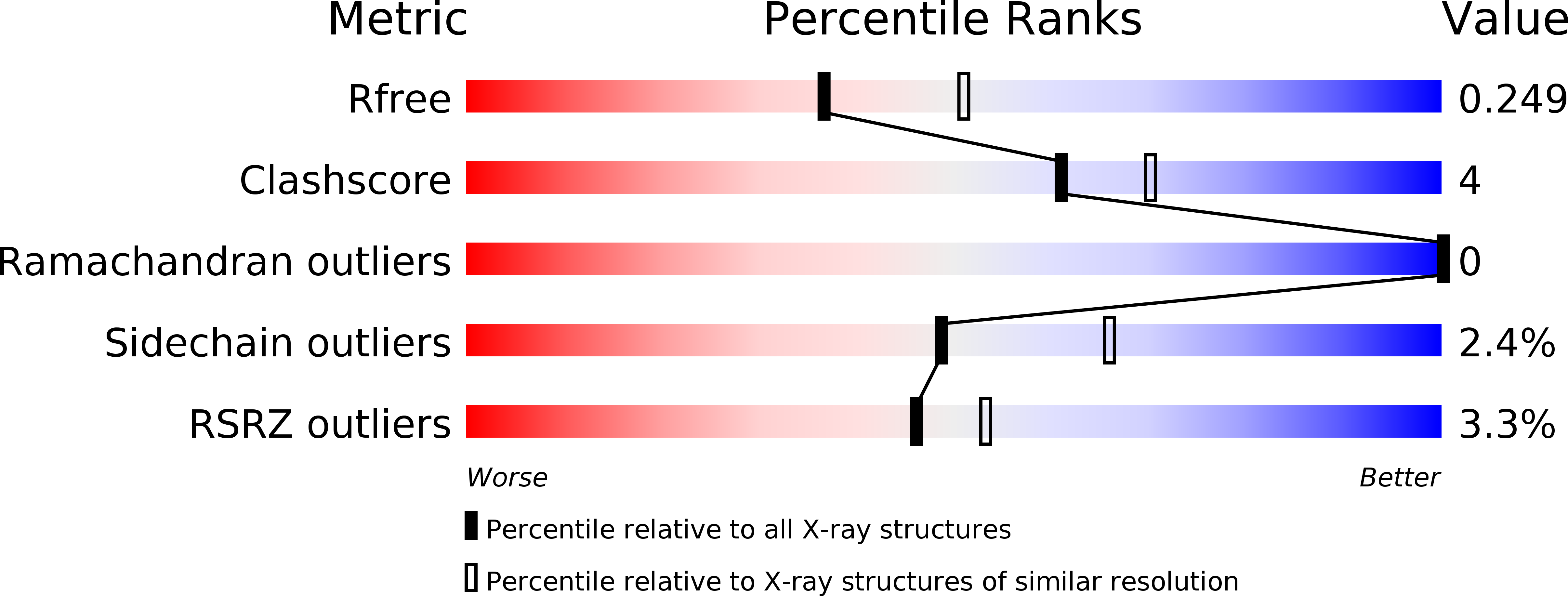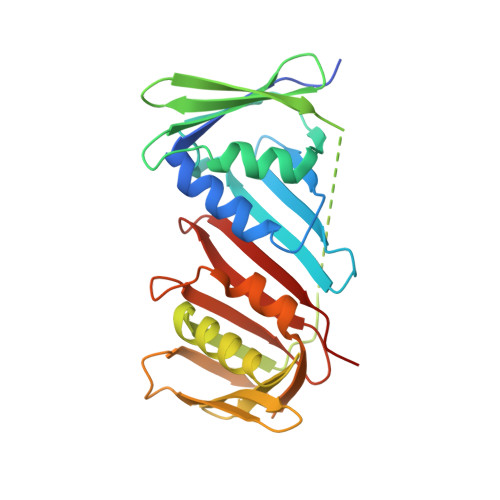Structural basis for the increased processivity of D-family DNA polymerases in complex with PCNA.
Madru, C., Henneke, G., Raia, P., Hugonneau-Beaufet, I., Pehau-Arnaudet, G., England, P., Lindahl, E., Delarue, M., Carroni, M., Sauguet, L.(2020) Nat Commun 11: 1591-1591
- PubMed: 32221299
- DOI: https://doi.org/10.1038/s41467-020-15392-9
- Primary Citation of Related Structures:
6T7X, 6T7Y, 6T8H - PubMed Abstract:
Replicative DNA polymerases (DNAPs) have evolved the ability to copy the genome with high processivity and fidelity. In Eukarya and Archaea, the processivity of replicative DNAPs is greatly enhanced by its binding to the proliferative cell nuclear antigen (PCNA) that encircles the DNA. We determined the cryo-EM structure of the DNA-bound PolD-PCNA complex from Pyrococcus abyssi at 3.77 Å. Using an integrative structural biology approach - combining cryo-EM, X-ray crystallography, protein-protein interaction measurements, and activity assays - we describe the molecular basis for the interaction and cooperativity between a replicative DNAP and PCNA. PolD recruits PCNA via a complex mechanism, which requires two different PIP-boxes. We infer that the second PIP-box, which is shared with the eukaryotic Polα replicative DNAP, plays a dual role in binding either PCNA or primase, and could be a master switch between an initiation and a processive phase during replication.
Organizational Affiliation:
Unit of Structural Dynamics of Macromolecules, Institut Pasteur and CNRS UMR 3528, Paris, France.














